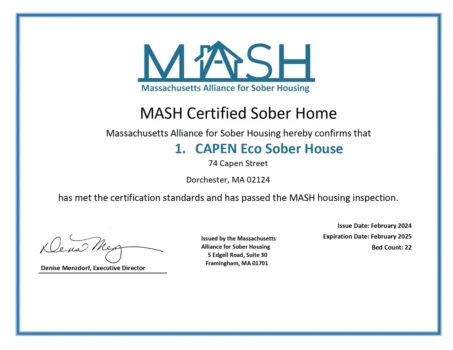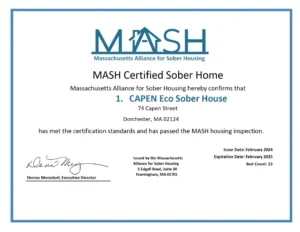Abstinence Violation Effect AVE Leave a comment

This sense of need is felt not only by health-care providers but also by people who smoke 14. The primary purpose of relapse prevention is to address the problem of relapse and to develop techniques to prevent or manage the conditions leading to it. Relapse prevention interventions have shown some success in improving the long-term maintenance of smoking abstinence among individuals 15. The AVE was introduced into the substance abuse literature within the context of the “relapse process” (Marlatt & Gordon, 1985, p. 37). Relapse has been variously defined, depending on theoretical orientation, treatment goals, cultural context, and target substance (Miller, 1996; White, 2007). It is, however, most commonly used to refer to a resumption of substance-use behavior after a period of abstinence from substances (Miller, 1996).
- Similar to the reward thought, you may have another common thought after a period of sobriety.
- Other more general strategies include helping the person develop positive addictions and employing stimulus-control and urge-management techniques.
- It’s important to establish that a one-time lapse in a person’s recovery from drugs or alcohol is not considered a full blown relapse.
- In addition, its internal consistency was assessed by using Cronbach’s alpha coefficient.
- Cognitive processes may include self-blame, rumination, and heightened self-awareness.
- The Chi-square test showed a significant difference between the two intervention and control groups in terms of the average number of daily cigarettes in 4 points.
- Furthermore, 12-step programs often celebrate abstinence milestones and encourage participants to count abstinent days, leading to a perception that someone who resumes substance use is “going back to the beginning” and has not made progress in recovery.
Factors That Contribute To The Abstinence Violation Effect

The term relapse may be used to describe a prolonged return to substance use, whereas lapsemay be used to describe discrete,… One of the special intervention strategies of the Marlatt model to prevent relapse is increasing self-efficacy through the cognitive-behavioral analysis of the situation and the training of the individual’s effective coping responses in high-risk situations 23. alcoholism treatment The present study aimed to assess the effectiveness of cognitive-behavioral intervention based on Marlatt’s model on relapse prevention of people who smoke. The abstinence violation effect (AVE) refers to the negative cognitive and affective responses that an individual experiences after the return to substance abuse after a period of abstinence. These responses, both physical and psychological, can be very difficult to deal with. Prolonged use of a substance causes a level or physical tolerance but after a period of abstinence that tolerance declines substantially.
A Lapse Vs. A Relapse

There are several factors that can contribute to the development of the AVE in people recovering from addiction. CP conceptualized the manuscript, conducted literature searches, synthesized the literature, and wrote the first draft of the manuscript. SD assisted with conceptualization of the review, and SD and KW both identified relevant literature for the review and provided critical review, commentary and revision. Although the benefits of 12-step participation may (and quite often do) outweigh the added AVE risk, clinicians should be aware of this particular risk and take steps to counteract it. Reach out to friends, family, or support groups for encouragement during difficult times. Taylor may think, “All that good work down the drain, I am never going to be able to keep this up for my life.” Like Jim, this may also trigger a negative mindset and a return to unhealthy eating and a lack of physical exercise.
Specific Intervention strategies in Relapse Prevention

This valuable treatment program can be introduced as a part of smoking cessation treatment and how to implement it along with the instructional package can be taught to people who smoke. The control group received routine smoking cessation treatment in 7 one-hour sessions. These sessions were held weekly and provided by counseling experts in smoking cessation clinics. Follow-ups were done immediately, one week and three months after the intervention.

- Addressing the AVE in the context of addiction treatment involves helping people develop healthier coping strategies and challenging negative beliefs that contribute to addiction.
- For example, I am a failure (labeling) and will never be successful with abstaining from drinking, eating healthier, or exercising (jumping to conclusions).
- Fortunately, professional treatment for addiction can improve outcomes for people experiencing the Abstinence Violation Effect.
- By reframing lapses as learning opportunities and teachable moments, cultivating self-compassion, and seeking support, individuals can navigate these challenges more effectively, increasing their chances of leading a healthier lifestyle.
Still, despite preventive programs in Iran, the smoking trend in adults has not declined in the last two decades 5. In addition, the prevalence of smoking among young people appears to be increasing 6. In addition, relaxation training, time management, and having a daily schedule can be used to help clients achieve greater lifestyle balance. The myths related to substance use can be elicited by exploring the outcome expectancies as well as the cultural background of the client. Following this a decisional matrix can be drawn where pros and cons of continuing or abstaining from substance are elicited and clients’ beliefs may be questioned6. His issue with drinking led to a number of personal problems, including the loss of his job, tension in his relationship with his wife (and they have separated), and legal problems stemming from a number of drinking and driving violations.
- These negative emotions are, unfortunately, often temporarily placated by a renewed pattern of substance abuse.
- In our era of heightened overdose risk, the AVE is more likely than ever to have tragic effects.
- CP conceptualized the manuscript, conducted literature searches, synthesized the literature, and wrote the first draft of the manuscript.
- It is not necessarily a failure of self-control nor a permanent failure to abstain from using a substance of abuse.
Learn From Relapse
However, broadly speaking, there are clear features of 12-step programs that can contribute to the AVE. Our addiction treatment network offers comprehensive care for alcohol addiction, opioid addiction, and all other forms of drug addiction. Our treatment options include detox, inpatient abstinence violation effect treatment, outpatient treatment, medication-assisted treatment options, and more. These patterns can be actively identified and corrected, helping participants avoid lapses before they occur and continue their recovery from substance use disorder. In other words, AVE describes the thoughts, feelings, and actions a person goes through after they make a mistake and have a drink or abuse a substance, despite trying to quit. When people don’t have the proper tools to navigate the challenges of recovery, the AVE is more likely to occur, which can make it difficult to achieve long-term sobriety.


